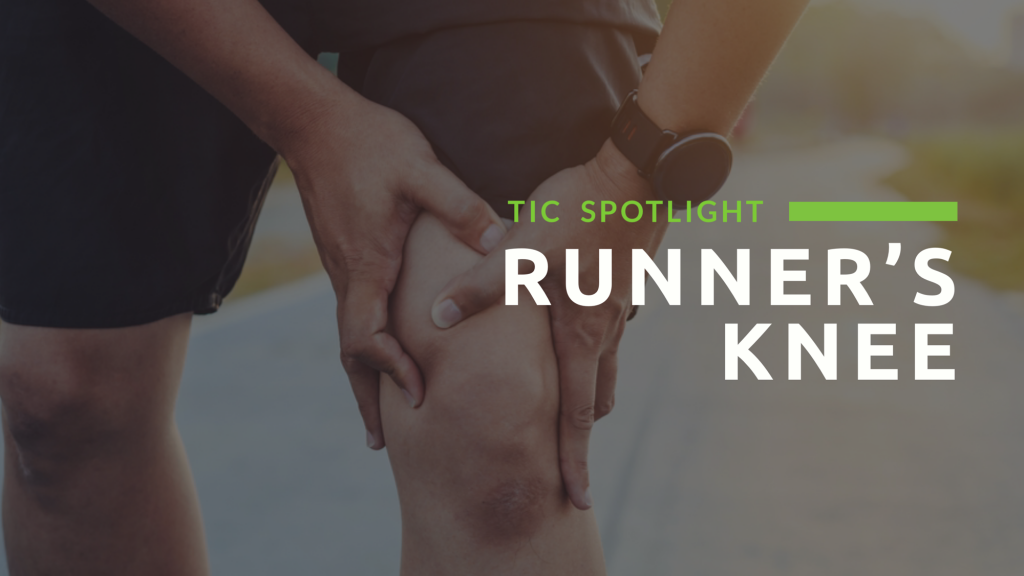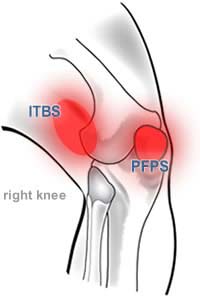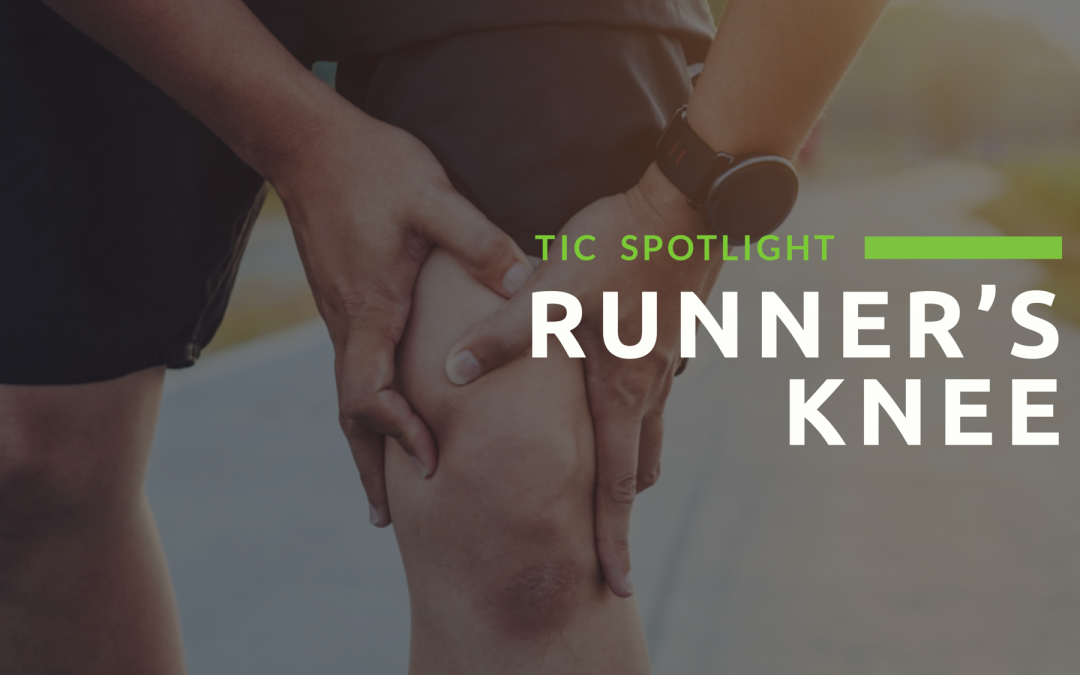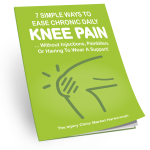
In this; the first of our new features ‘TIC Spotlight’ we shed some light on one of the most common knee conditions seen by us here in the clinic – ‘Runner’s Knee’. This type of knee condition is especially prevalent this time of year as more and more people turn to exercise to get fitter and those training for marathon season begin to ramp up their frequency and millage over the next few months.
Runner’s Knee
What is it?
Runner’s knee is a term used to refers to one of two common conditions of the knee, Patellofemoral Syndrome (PFPS) or Iliotibial Band Syndrome (ITBS). Both are often the result of repetitive strain or overuse of the knee and are categorised by pain and irritation under / around the kneecap and/or side of the knee.
Symptoms
 Those suffering from Iliotibial Band Syndrome cause of runner’s knee typically complain of pain on the side of the knee and is thought to be the result of the ITB tendon itself or the underlying anatomy become fatigued and rubbing leading to this type of knee pain also often being referred to as iliotiboal band friction syndrome.
Those suffering from Iliotibial Band Syndrome cause of runner’s knee typically complain of pain on the side of the knee and is thought to be the result of the ITB tendon itself or the underlying anatomy become fatigued and rubbing leading to this type of knee pain also often being referred to as iliotiboal band friction syndrome.
Those suffering with Patellofemoral Pain Syndrome on the other hand typically describe a dull aching pain in the front of the knee, under or around the knee cap. This type of runner’s knee is more common that ITBS and is often due to muscular imbalance around the knee leading to irritation of the underside of the knee cap.
Other symptoms may include; an increase in temperature around the knee, clicking or grinding, pain when sitting and in more aggravated cases also swelling.
These type of knee symptoms are typically felt during activities that involve the knee bending such as, going up and/or down stairs, squatting, kneeling, running, sitting for long periods of time with the knee bent or in acute cases runner’s knee can even present with pain upon walking (particularly with undulating ground).
Causes
Common causes of runner’s knee symptoms typically involve activities that cause repetitive stress on the joint leading to overuse and irritation of the soft tissues around the knee. This overuse can lead to muscular imbalances, muscular weakness and muscular tightness developing around the knee and affecting how your knee joint is able to move or ‘track’.
Suddenly increasing the intensity or frequency of exercise can expose the knees to more load than they are able to tolerate causing inflammation of the soft tissues around the joint.
Women are at more risk of developing runner’s knee symptoms than men due to having wider set hips increasing the angle of stress at the knee. People with lower arches are also at a greater risk of developing runner’s knee. Both of these factors can alter running and even walking style increasing the stress travelling through the knee joint.
Common Myth
Only runners can get runner’s knee – False!
Although as the name suggests, runner’s knee is especially prevalent amongst runners; due to the overuse nature of the causes of runner’s knee it can also commonly affect hikers, dog walkers, gym goers and cyclists too! Overuse doesn’t always mean through repetitive movement. Those that sit for a living can also be at risk of the symptoms of runner’s knee as sitting with the knee constantly bent can fatigue the muscles around the knee and lead to imbalances.
What Can You Do?
Seeking treatment as soon as you begin to experience symptoms can help to prevent the risk of the injury becoming worse and developing poor movement habits and further imbalances.
Following an assessment of your injury, your therapist can set a treatment plan and exercise programme to decrease your symptoms and address the cause. Most often the first steps to treatment involve activity modification to prevent symptoms from getting any worse. Common conservative treatments for runner’s knee include a combination of;
– Ultrasound
– Sports Massage
– Medical Acupuncture
– Ice
– Taping
– Activity modification and strengthening exercises
Self-help techniques at home can also help manage the symptoms of runner’s knee. If you begin to experience knee symptoms apply ice for 20 minutes after following activity to ease pain and minimise swelling and inflammation. Modifying your activity and resting from any activities that provoke pain will also help get your runner’s knee under control.
If you know anyone that the information in this article could help, then please feel free to pass it on and share with your family and friends.
Want to know some to know some more of our top tips for knee pain. Download our FREE Knee Pain Guide below:
FREE Knee Guide
7 Simple Ways To Ease Chronic Daily Knee Pain!
…Without Injections, Painkillers, or Having To Wear A Support!
Yes, I Would Like This FREE Guide

